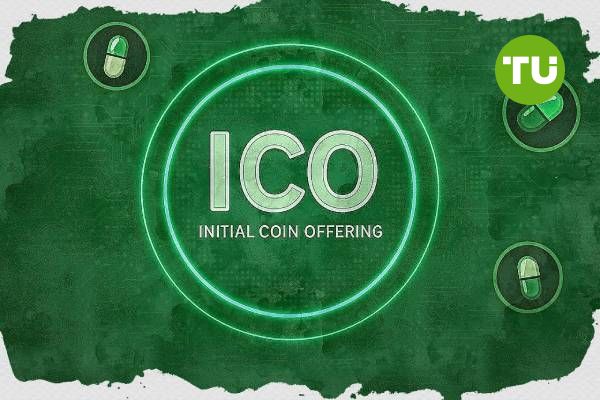Main ICO of 2025: How PumpFun revives meme coin sector
 How PumpFun raised $500 million in 12 minutes and divided the crypto community
How PumpFun raised $500 million in 12 minutes and divided the crypto community
A month ago, a project born from the hyperactive meme culture on Solana began hinting at something big: vague tweets, no official announcements, just a cloudy promise of “soon.” Analysts joked that PumpFun would either launch a billion-dollar ICO with fireworks — or vanish, leaving behind thousands of joke coins with zero liquidity.
But on July 12, the platform opened public sales for the PUMP token — and within just 12 minutes, it had raised half a billion dollars.
PumpFun raised $500M in 12 minutes
The initial offering of PUMP became one of the largest ICOs in recent years. Out of the total supply of 1 trillion tokens, 33% were allocated for the sale: 18% went to institutional investors, and 15% (150 billion tokens) were supposed to go to retail participants.
However, only 125 billion tokens were actually sold publicly — without any official explanation for the reduction. Still, they sold out in 12 minutes — an exceptional pace, even by meme coin standards. The token was priced at $0.004, with total proceeds reaching $500 million.
The public round was held via the PumpFun website and centralized exchanges like Kraken, KuCoin, Gate.io, Bybit, MEXC, and others. The sale ended before most users could even refresh the page.
Market reaction was immediate: the token price spiked on exchanges, only to crash by more than 80% within 24 hours. A typical trajectory for meme coins, which tend to follow the rules of drama rather than economics.
Hype, split opinions, and the bots behind the scenes
Despite the breakneck fundraising and $500 million raised, PumpFun left more than just headlines in its wake — it triggered a deep split within the crypto community. For some, it’s a sign of a new era in crypto. For others, a spectacular step backward.
Loading...
Haseeb Qureshi of Dragonfly didn’t hide his excitement: “This isn’t just one of the largest ICOs ever — it will be one of the most profitable tokens in the crypto space.”
But just hours later came a radically different view.
Loading...
Mary Bent, founder of Truth for the Commoner, compared PumpFun to “a Pied Piper leading Gen Z into financial ruin.” Even indirect support for this culture, she argued, amounts to complicity.
Loading...
Conor Grogan of Coinbase added fuel to the fire: most meme coins on platforms like PumpFun and LetsBonk, he claimed, are created by scripts — not humans. One user, he noted, had launched over 18,000 tokens, creating a dozen per hour, every day, for months.
Founders, history, and the unspoken
PumpFun was created by three people — Noah Tweedale, Alon Cohen, and Dylan Kerler. And it’s the latter who drew particular attention: an investigation by WIRED revealed that at the age of 16, Kerler had been involved in several scam projects, including EthereumCash and eBitcoinCash. The amounts were small by industry standards, but the reputation remains tarnished to this day.
None of this stopped PumpFun from becoming one of the most profitable projects on Solana. In its first six months, the platform generated tens of millions of dollars in revenue from the creation and trading of meme coins. And by forecasts, 2025 could become a billion-dollar year for it.
Legal risks
The hype attracted not only investors — but also lawyers. In the U.S., a lawsuit has already been filed against PumpFun, accusing it of trading unregistered securities. The complaint includes the classic list: market manipulation, artificial pumping, and lack of full disclosure.
What’s more interesting is this: the ICO terms clearly stated that users from the U.S. and the U.K. were not allowed to participate. But, as often happens in the crypto industry, this was more of a formality. Jurisdictional uncertainty now hangs over the project — and that could trigger a new wave of restrictions or fines, as has happened with other platforms before.
Was this an atavism or a signal?
Meme coins, launched every second, have long stopped being just a joke — they've become a crypto sector of their own. There’s no white paper here. No roadmap. No team promising to change the world.
But there is speed. There is thrill. There is a culture where buying a token five seconds after launch is the product.
The success of PumpFun may signal the revival of the meme coin sector, which went through a sharp decline after being one of the most profitable asset classes in 2024. What’s more, this launch marks the return of ICOs — a model that had all but disappeared due to regulatory pressure in the U.S. under former SEC chairman Gary Gensler.
$500 million raised without any fundamental value isn’t a sign of investor foolishness — it’s proof that the meme has become a currency. And the joke — a business.
Should this be repeated? That’s an open question. But what matters most is this: no one is asking whether it’s possible anymore. PumpFun has already answered.













































































































































